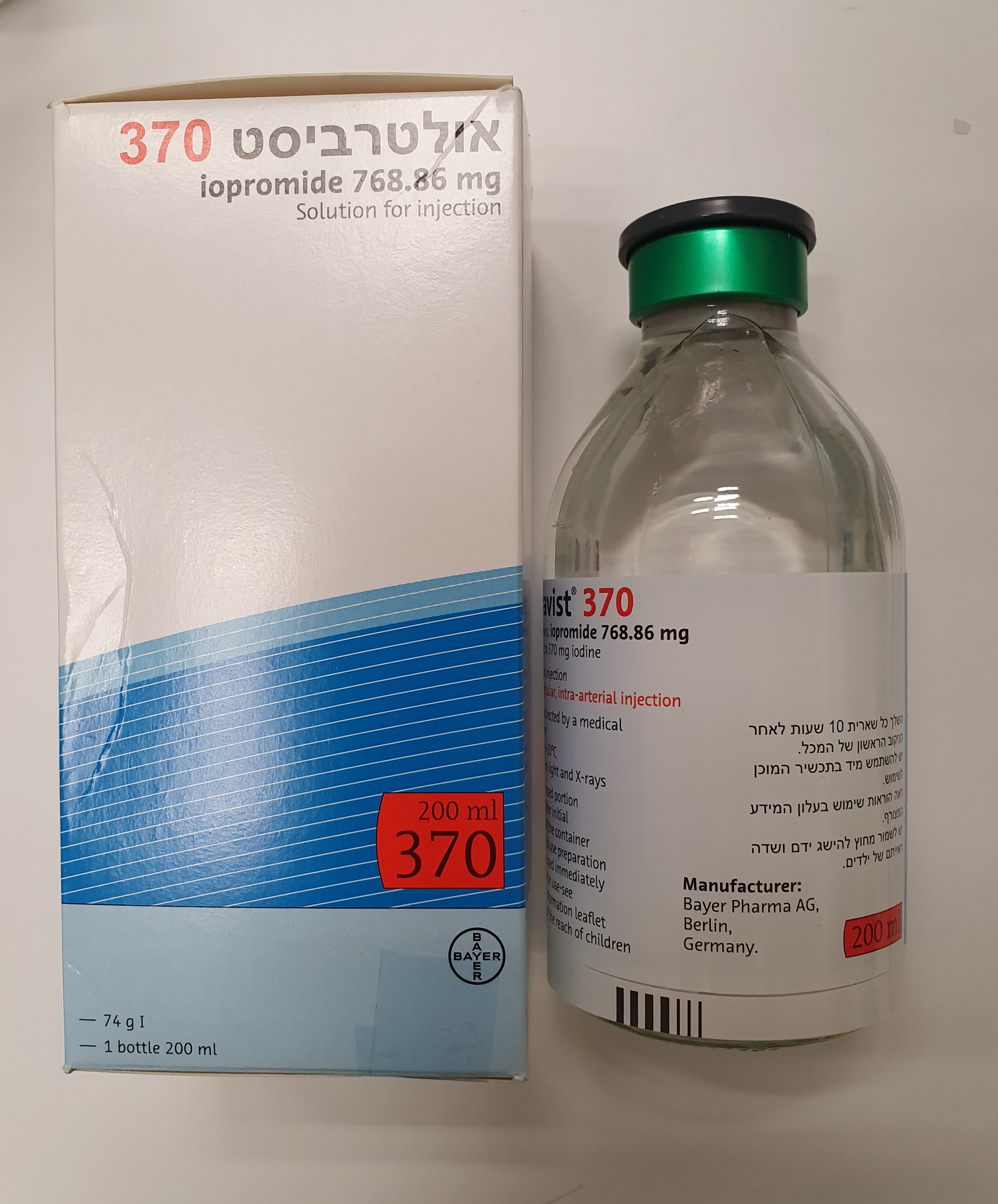Quest for the right Drug

אולטרביסט 370 ULTRAVIST 370 (IOPROMIDE)
תרופה במרשם
תרופה בסל
נרקוטיקה
ציטוטוקסיקה
צורת מתן:
תוך-ורידי, תוך-עורקי : I.V, INTRA-ARTERIAL
צורת מינון:
תמיסה להזרקה : SOLUTION FOR INJECTION
עלון לרופא
מינוניםPosology התוויות
Indications תופעות לוואי
Adverse reactions התוויות נגד
Contraindications אינטראקציות
Interactions מינון יתר
Overdose הריון/הנקה
Pregnancy & Lactation אוכלוסיות מיוחדות
Special populations תכונות פרמקולוגיות
Pharmacological properties מידע רוקחי
Pharmaceutical particulars אזהרת שימוש
Special Warning עלון לרופא
Physicians Leaflet
Posology : מינונים
4.2 Posology and method of administration • General information Experience shows that contrast medium is tolerated better if it is warmed to body temperature. Intravenous urography Adults: The minimum dose is 0.8ml/kg body weight Ultravist 370, (1ml/kg Ultravist 300). These doses should provide adequate filling of the ureters. It may be necessary to increase the dose in individual cases. Children: The poor concentrating ability of the immature nephron of infantile kidneys necessitates the use of relatively high doses of contrast medium, i.e. for Ultravist 300: Neonates: 4.0 ml/kg body weight Babies: 3.0 ml/kg body weight Small children: 1.5 ml/kg body weight Computerised tomography Cranial CT: The following dosages are recommended for cranial CT: Ultravist 300: 1-2ml/kg body weight Ultravist 370: 1-1.5ml/kg body weight Whole-body CT: For whole-body computerised tomography, the doses of contrast medium and the rates of administration depend on the organs under investigation, the diagnostic problem and, in particular, the different scan and image-reconstruction times of the scanners in use. Angiography: The dosage depends on the age, weight, cardiac output and general condition of the patient, the clinical problem, examination technique and the nature and volume of the vascular region to be investigated. The following dosages may serve as a guide: Cerebral angiography Aortic arch angiography 50-80 ml Ultravist 300/inj. Selective angiography 6-15 ml Ultravist 300/inj. Thoracic aortography: 50-80 ml Ultravist 300/inj. Abdominal aortography: 40-60 ml Ultravist 300/inj. Peripheral angiography: Upper extremities: Arteriography 8-12 ml Ultravist 300/inj. Venography 15-30 ml Ultravist 300/inj. Lower extremities: Arteriography 20-30 ml Ultravist 300/inj. Venography 30-60 ml Ultravist 300/inj. Angiocardiography: Cardiac-ventriculography 40-60 ml Ultravist 370/inj. Coronary angiography: 5-8 ml Ultravist 370/inj. Digital subtraction angiography (DSA): I.V. injection of 30-60 ml Ultravist 300 or 370 as a bolus (flow-rate: 8-12 ml/second into the cubital vein; 10-20 ml/second into the vena cava) is recommended for high-contrast demonstrations of the great vessels, of the pulmonary arteries and of the arteries of the neck, head, kidneys and extremities. Intra-arterial digital subtraction angiography requires smaller volumes and lower iodine concentrations than the intravenous technique. Additional information on special populations • Paediatric population Young infants (age < 1 year) and especially newborns are susceptible to electrolyte imbalance and haemodynamic alterations. Care should be taken regarding the dose of contrast medium to be given, the technical performance of the radiological procedure and the patient status (see section 5.2). • Patients with renal impairment Since iopromide is excreted almost exclusively in an unchanged form via the kidneys, the elimination of iopromide is prolonged in patients with renal impairment. In order to reduce the risk of additional contrast media-induced renal impairment in patients with pre-existing renal impairment, the minimum possible dose should be used in these patients (see also sections 4.4, 5.1 and 5.2). • Patients with hepatic impairment No dosage adjustment is necessary in patients with hepatic impairment (see section 5.2). • Elderly When administered to elderly patients, the possibility of reduced renal function (leading to reduced clearance) should be considered (see section 5.2).

שימוש לפי פנקס קופ''ח כללית 1994
לא צוין
תאריך הכללה מקורי בסל
לא צוין
הגבלות
לא צוין
מידע נוסף
